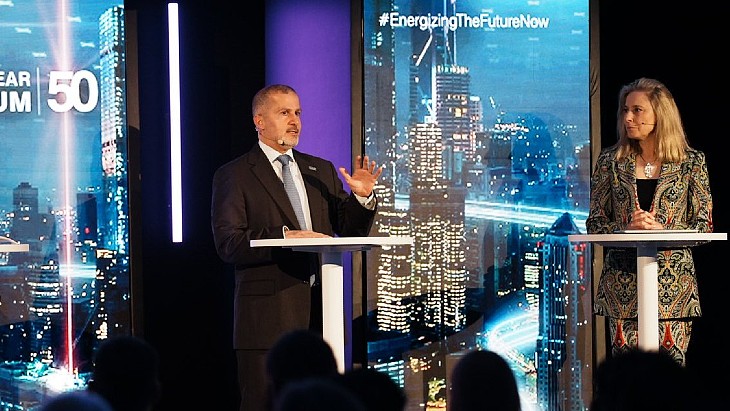Hot functional testing of the 1600 MWe pressurised water reactor began in December 2017 and was completed in May last year, 50 days later than planned. These key pre-operational tests ensure coolant circuits and nuclear safety systems are functioning properly before fuel is loaded. They are the first tests at plant-level where the reactor and turbine plant are operated as a whole, although still without fuel. The delay in completing the hot functional tests was due to vibrations in the pressuriser surge line. Based on the test results, TVO had said a comprehensive modification package would be implemented at OL3 to update the plant's electrical and instrumentation and control systems.
Finland's Radiation and Nuclear Safety Authority (Stuk) said in February this year that work to suppress the pressuriser surge line vibration is one area to be supervised and inspected before fuel loading. At that time, it noted technical solutions exist for fixing this issue.
TVO announced today that it has now started work to install liquid absorbers featuring bitumen to resolve the vibration issue.
"Bitumen's behaviour has been studied by a series of tests in Lappeenranta-Lahti University of Technology LUT," TVO noted. "Areva has also conducted tests by its research equipment. Based on the research performed, Stuk has approved the use of bitumen as absorber material."
The company said installation of absorbers is expected be completed in the early summer.
TVO was granted an operating licence by the Finnish government for Olkiluoto 3 on 7 March. For fuel loading, TVO still requires a separate authorisation from Stuk.
The Areva-Siemens consortium began construction of Olkiluoto 3 in 2005 under a turnkey contract signed with TVO in late 2003. Completion of the reactor was originally scheduled for 2009, but the project has suffered various delays and setbacks. Under the latest schedule, fuel will now be loaded into the reactor core in June this year, with grid connection to take place in October, and the start of regular electricity generation scheduled for January 2020.
Once it enters commercial operation early next year, the 1600 MWe pressurised water reactor will supply some 15% of the country's electricity demand.
In December, unit 1 of the Taishan plant in China's Guangdong province became the first EPR to enter commercial operation. Taishan 2 is scheduled to begin commercial operation this year. The loading of fuel into the core of the Flamanville EPR in France is expected towards the end of this year. Two EPR units are also under construction at the Hinkley Point C project in Somerset, UK.

.jpg)




_18570.jpg)
_16159.jpg)
_49205.jpg)





